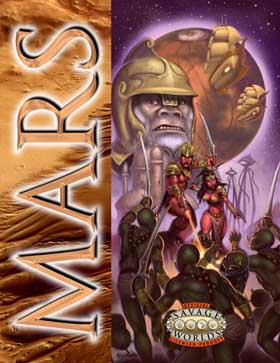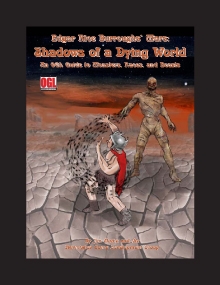
When I imported a copy of Fairy Tale from Japan in 2004, I found it to be a great little game with an interesting card distribution system. Instead of having cards dealt to each player, cards were instead distributed using a simple, quick draft. This gave each player more control over their own cards and limited knowlege of the other players cards. Otherwise, Fairy tale was a pretty simple set collection game (albeit one with a few "take that" elements built in and a really cool theme). Immediately, I started thinking of other game designs that could use the drafting mechanism. Apparently, Antoine Bauza had a similar experience. His 7 Wonders uses the draft as its core mechanism. It is also somewhat of a set collection game. Still, it does not feel like a "rip off" of Fairy Tale. Instead, it reveals itself to be a solid game that will likely become a staple filler game with hardcore gamers and casual gamers alike.
In 7 Wonders, players play the role of one of seven ancient civilizations that were responsible for building the Seven Wonders of the Ancient World. One of the players' goals during the game will be to complete their wonder. Additionally, players will be building structures that either add abilities, score victory points, or develop resources for their kingdom (some buildings bring multiple rewards).
7 Wonders is nearly entirely card-based. The game is played in three rounds. Each round starts with a draft. Players are dealt seven cards each. They pick one card from those dealt to them and either play it immediately, sell it for cash, or use it (face down) to mark the building of a level of their Wonder. The players then pass the remaining six cards to their neighbor (left-hand or right-hand depending on the turn), choose another card, and repeat the process. This continues for a total of six turns of drafting and actions; the remaining cards are discarded.
Cards represent seven different types of structures: raw materials, manafactured goods, civilian, scientific, military, commercial, and guilds.
Raw and Manufactured Goods structures give the player resources to build other building. These resources aren't spent. Once a player's nation can produce a resource, that resource will be available each turn.
Civilian structures are simply worth victory points at the end of the game.
Scientific structures have three different symbols on them. Players earn victory points for complete sets and multiples of the same symbol.
Military structures raise the nations military strength. Players compare military might with their neighbors at the end of each turn and lose or gain victory points according to whether they are weaker or stronger than their nieghbor.
Commercial structures pirmarily bring in money or lower the cost of using other players' resources.
Guilds come in during the third age and are immediately worth a certain amount of cash based on the types of cards the player and his or her nieghbor have in play. Additionally, guilds earn the nation victory points at the end of the game based on the same criteria.
Are these card types balanced? I think so. In early plays, we felt that the game was a bit unbalanced because some players were scoring a boat load of points using the Science structures. After we learned to control that (mostly by not passing a green card unless we had to), it looked like Military dominance was the way to go. Now, after a dozen or so plays, it seems that each structure type has its place. We've had players win big with nothing but Civilian structures and the building of their wonder.
About the wonders: players each are given a player board with the stages (mostly three) of their wonder on them. Each stage has a cost to build and a reward for the player. The costs and rewards vary greatly, and I really haven't got a handle on whether the wonders are balanced or not. Certainly, no one in our group has put forth the idea that one of them is broken.
 For example, the first phase of the Pyramid of Giza costs two stone and rewards the player with three VP
For example, the first phase of the Pyramid of Giza costs two stone and rewards the player with three VP
The entire game is encompassed by the drafting of eighteen cards and the taking of eighteen actions. This scarcity of actions makes making the right choice very important. If the card you play isn't at least maintaining victory point parity with the rest of the players, it is usually a bad play. In the end, a player is unlikely to win unless they average at least three VPs per action. Our lowest winning total to date is 47 points--and that was in an early game before we really figured out how to play. 
My Take: So, is the game any good. Yes. Yes, it is. We have played the game at nearly every one of our weekly game nights since I got it at Christmas. It isn't a deep game, certainly, and it is 100 % tactical. You might have the urge to choose a strategy at the beginning of the game, but the game will consistently send the wrong cards your way. It is all about making the best of what you are able to draft, and I like that. Thirty minute tactical games are fine. If it were twice as long, I could understand some of the complaints about the lack of strategic options. The game has worked well with every one we have introduced it to, from the hardened gamer to the gaming newbie. It plays super-fast and has a real "just one more game" feel to it. The game is due to be back on shelves soon. I highly recommend picking it up if you don't have a copy in your game group to play.
 Wednesday, March 2, 2011 at 06:32PM
Wednesday, March 2, 2011 at 06:32PM  Space is deep - so says Hawkwind (& L. Ron Hubbard)Hyper drives and worm holes not only distort space but also perceptions. Take movies like Star Wars or shows like Star Trek, for example. Need to get from Quadrant 42 to Earth? Punch a button to make it so. Yeah, it’s a great plot device, but it doesn’t make you stop to think about the reality of it all. That’s one thing that strikes me whenever I’m reading one of Ben Bova’s Grand Tour books. In Saturn, for instance, the whole plot takes place on the way THERE. Those books made me really appreciate what Douglas Adams was getting at writes in The Hitchhiker’s Guide to the Galaxy: “Space is big. Really big. You just won't believe how vastly, hugely, mindbogglingly big it is. I mean, you may think it's a long way down the road to the chemist's, but that's just peanuts to space." For the longest time, “really big” pretty much summed up the size of it all for me, but now I'm not quite convinced he got it right.
Space is deep - so says Hawkwind (& L. Ron Hubbard)Hyper drives and worm holes not only distort space but also perceptions. Take movies like Star Wars or shows like Star Trek, for example. Need to get from Quadrant 42 to Earth? Punch a button to make it so. Yeah, it’s a great plot device, but it doesn’t make you stop to think about the reality of it all. That’s one thing that strikes me whenever I’m reading one of Ben Bova’s Grand Tour books. In Saturn, for instance, the whole plot takes place on the way THERE. Those books made me really appreciate what Douglas Adams was getting at writes in The Hitchhiker’s Guide to the Galaxy: “Space is big. Really big. You just won't believe how vastly, hugely, mindbogglingly big it is. I mean, you may think it's a long way down the road to the chemist's, but that's just peanuts to space." For the longest time, “really big” pretty much summed up the size of it all for me, but now I'm not quite convinced he got it right. 





